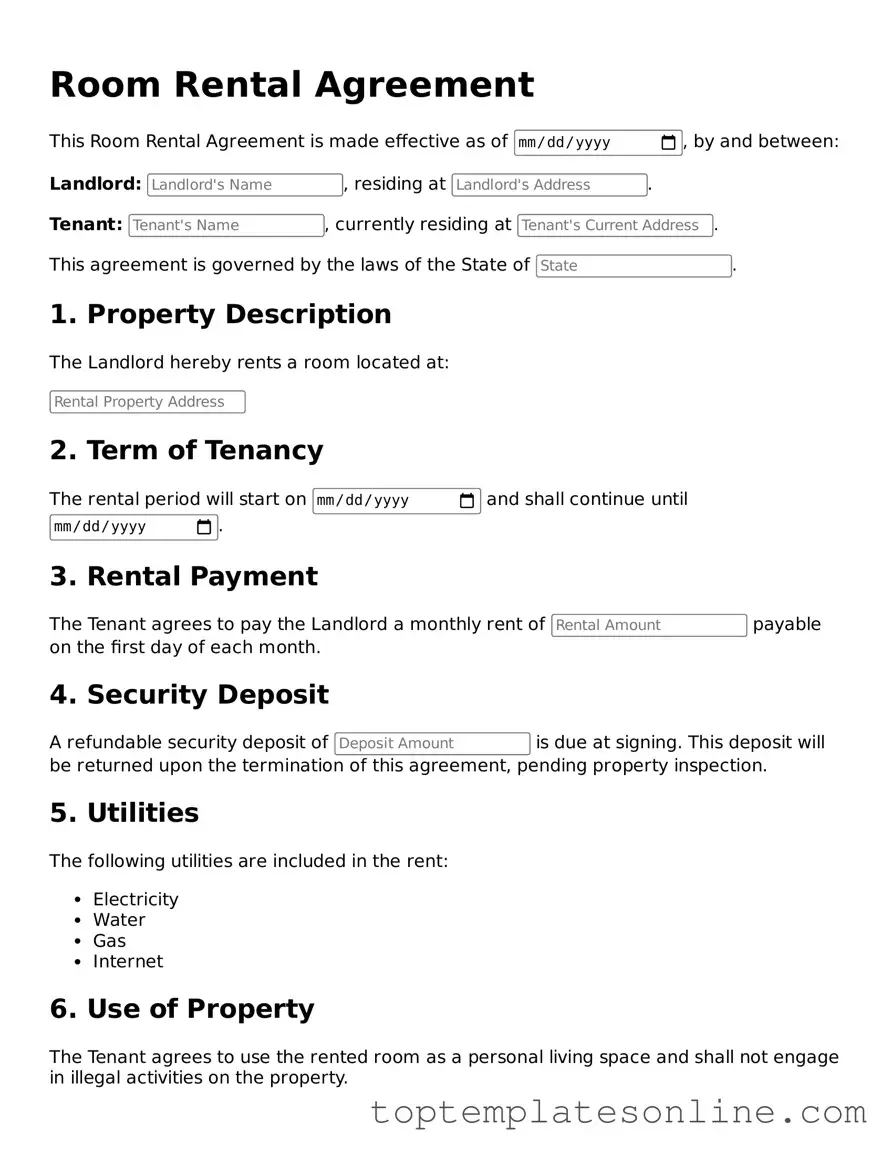Attorney-Approved Room Rental Agreement Form
A Room Rental Agreement is a legal document that outlines the terms and conditions between a landlord and a tenant for renting a room within a property. This agreement helps protect the rights of both parties while ensuring clarity regarding rent, duration, and responsibilities. Understanding this form is essential for anyone considering renting or leasing a room.
Customize Room Rental Agreement Here
